[ad_1]
“It is wonderful how a lot structure is finished on resort napkins,” AMD fellow, Andy Pomianowski tells a room full of press at AMD’s RDNA 3 launch occasion. It is information to me. I had at all times assumed a liberal quantity of wipe board markers had been the go-to option to observe down any forthcoming concepts. But RDNA 3’s chiplet structure was truly first jotted down on a flimsy piece of paper in a resort throughout an off-site workers assembly.
“We’re grappling with challenges. How do we offer the perfect product for our prospects? We have had lots of success in server and the desktop market, and the applying of that expertise to GPUs wasn’t apparent,” Sam Naffziger, company fellow at AMD, tells us.
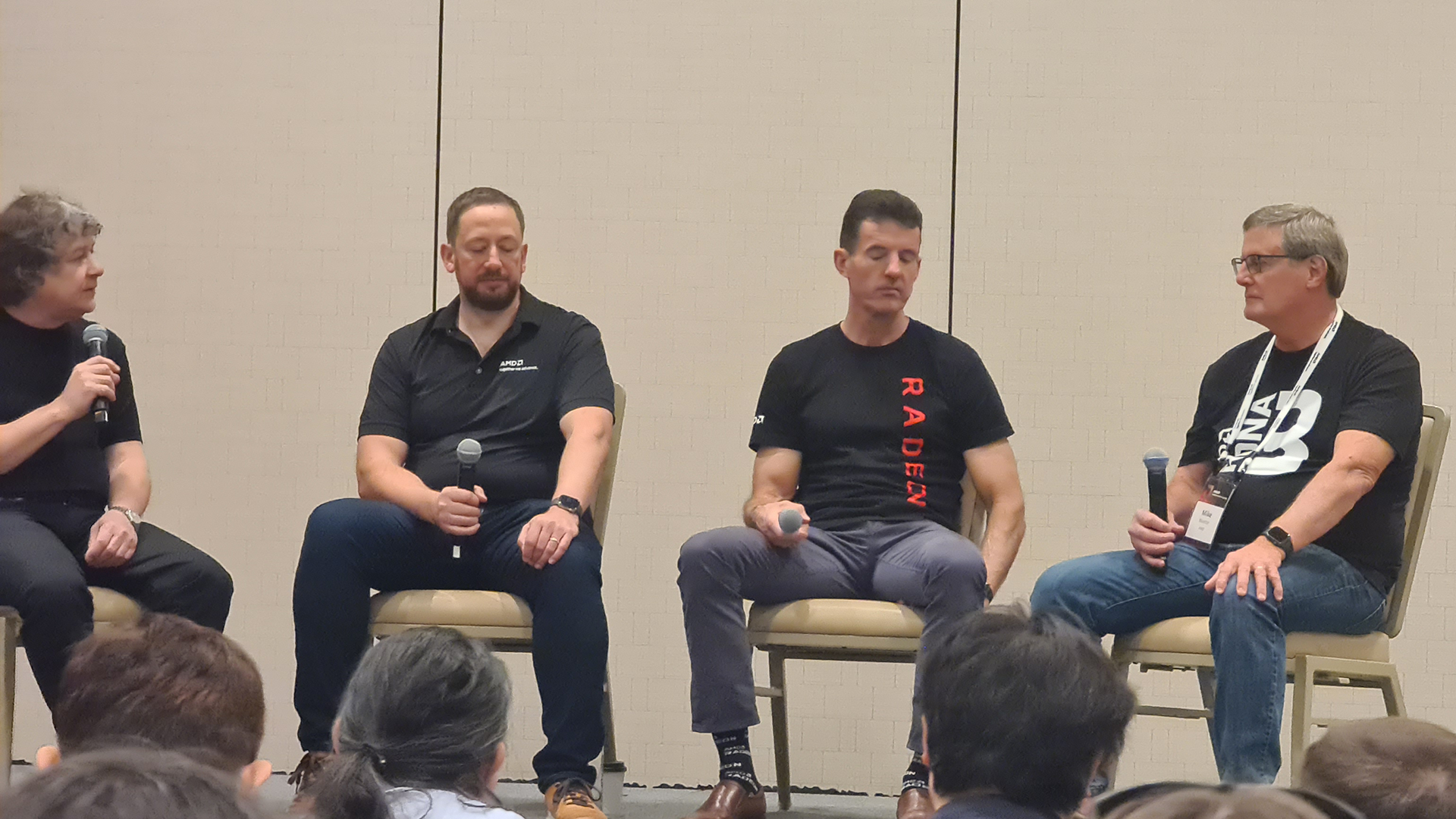
(opens in new tab)
“Mike [Mantor] and Andy [Pomianowski] had very aggressive targets, lots of options and objectives that we knew we couldn’t meet together with out doing one thing totally different.”
“So we have been off at our workers off-site, and doing our half, being good, pretending we have been engaged, however not the entire shows have been as partaking, There was one the place we have been sitting there pondering, my thoughts is working within the background, and simply pondering via the entire expertise challenges and the choices. And so I began scratching out on somewhat resort pad there, which nobody normally makes use of however on occasion they come in useful.”
In response to Naffziger, he jotted down one thing that might now be fairly acquainted to any PC gamer that is sizzling on the newest {hardware}: the plan for the chiplets inside RDNA 3’s just lately introduced GPUs: the RX 7900 XTX and RX 7900 XT (opens in new tab).
“So the GCD/MCD factor. I scratched out one thing remarkably like what we confirmed yesterday [at RDNA 3’s launch event] and it appeared a wager. So I slipped it over to Andy, and he sat there and he did one among his, , furrowed his forehead, and stated ‘I believe that may work’.”
“Begin with a serviette. Then it is PowerPoint, after which the engineering groups simply do it,” Pomianowski jokes.
If solely it have been that easy. The RDNA 3 structure does contain simply two chiplet sorts—the GCD and the MCD—however there’s a complete lot extra to it than that might counsel.
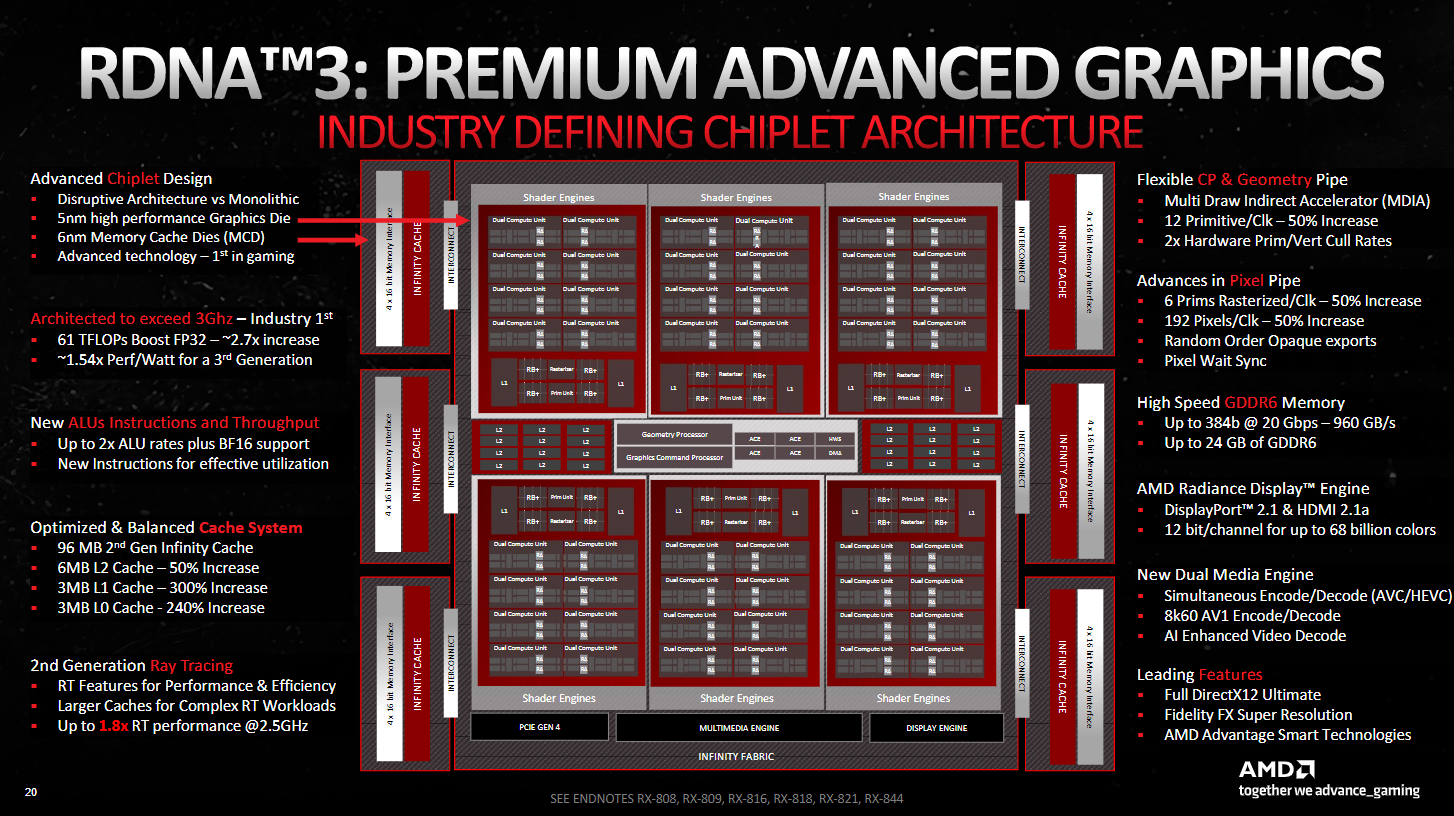
(opens in new tab)
Consider RDNA 3 as an amicable break up for the graphics pipeline and the bigger a part of the reminiscence subsystem.
The GCD is the place the precise shader cores reside—often known as stream processors in AMD’s RDNA structure. These are grouped into Twin Compute Models, not in contrast to RDNA 2, besides with a brand new and improved multi-purpose ALU for higher instruction throughput, an enhanced AI operation unit with the brand new Matrix Accelerator, and a bigger Vector Cache. These upgrades and lots of others permit RDNA 3’s Twin CU to supply a lot improved clock for clock efficiency over last-gen—round 17.4%.
Eight Twin Compute Models share L1 cache inside a Shader Engine. Six Shader Engines share L2 cache, a Geometry Processor, and a Graphics Command Processor. All of which lives throughout the GCD and is joined by the cardboard’s PCIe Gen 4 silicon, Multimedia Engine, and Show Engine.
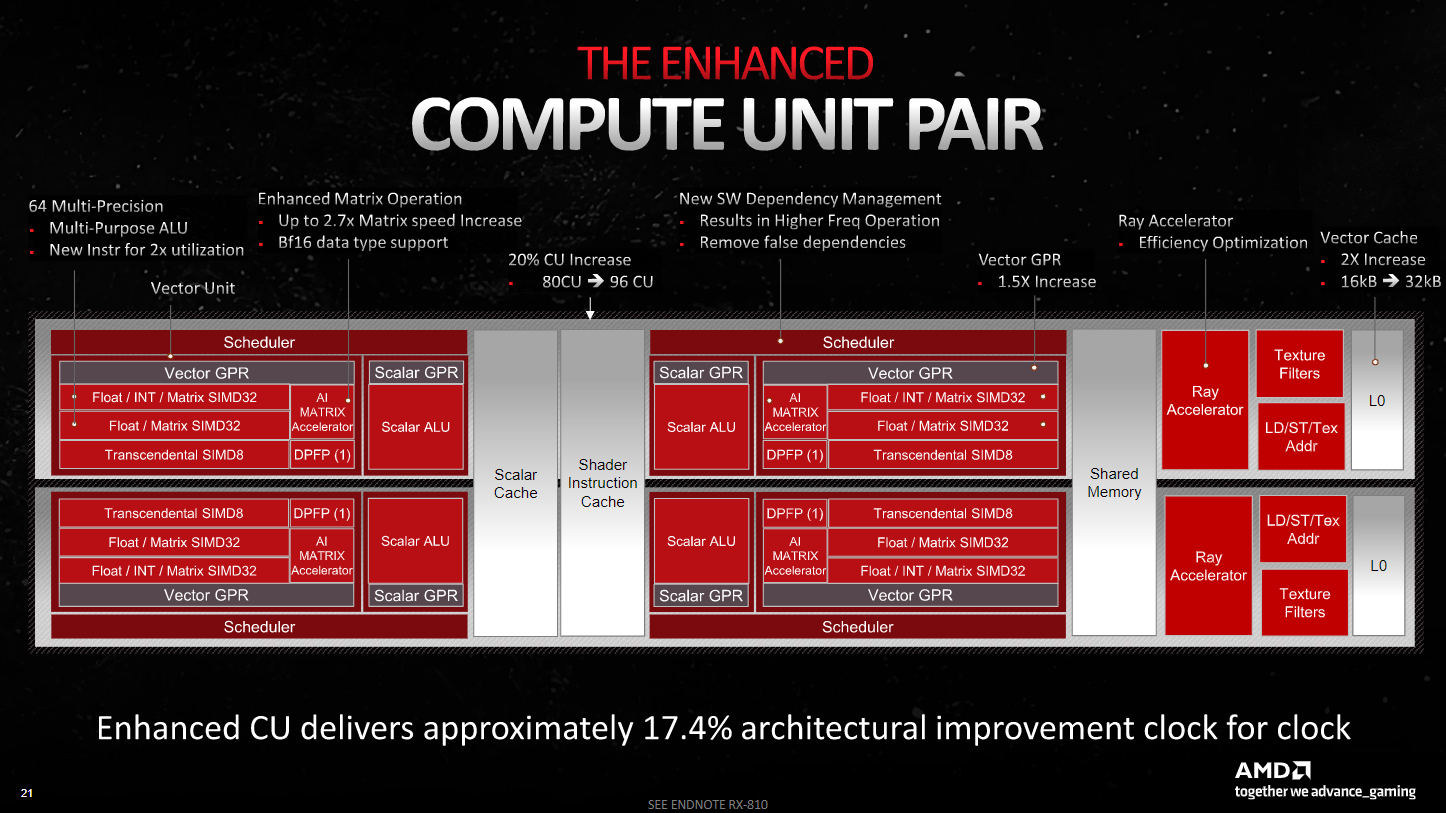
(opens in new tab)
And that about wraps up a very top-level division of the GCD throughout the Navi 31 GPU. But some stuff is lacking: Infinity Cache, for one, which is a key characteristic of RDNA launched again with RDNA 2, but in addition crucially a means for the GPU to speak with the reminiscence chips put in off bundle on the graphics card PCB. You would not get very far within the newest video games with out entry to a big reminiscence buffer.
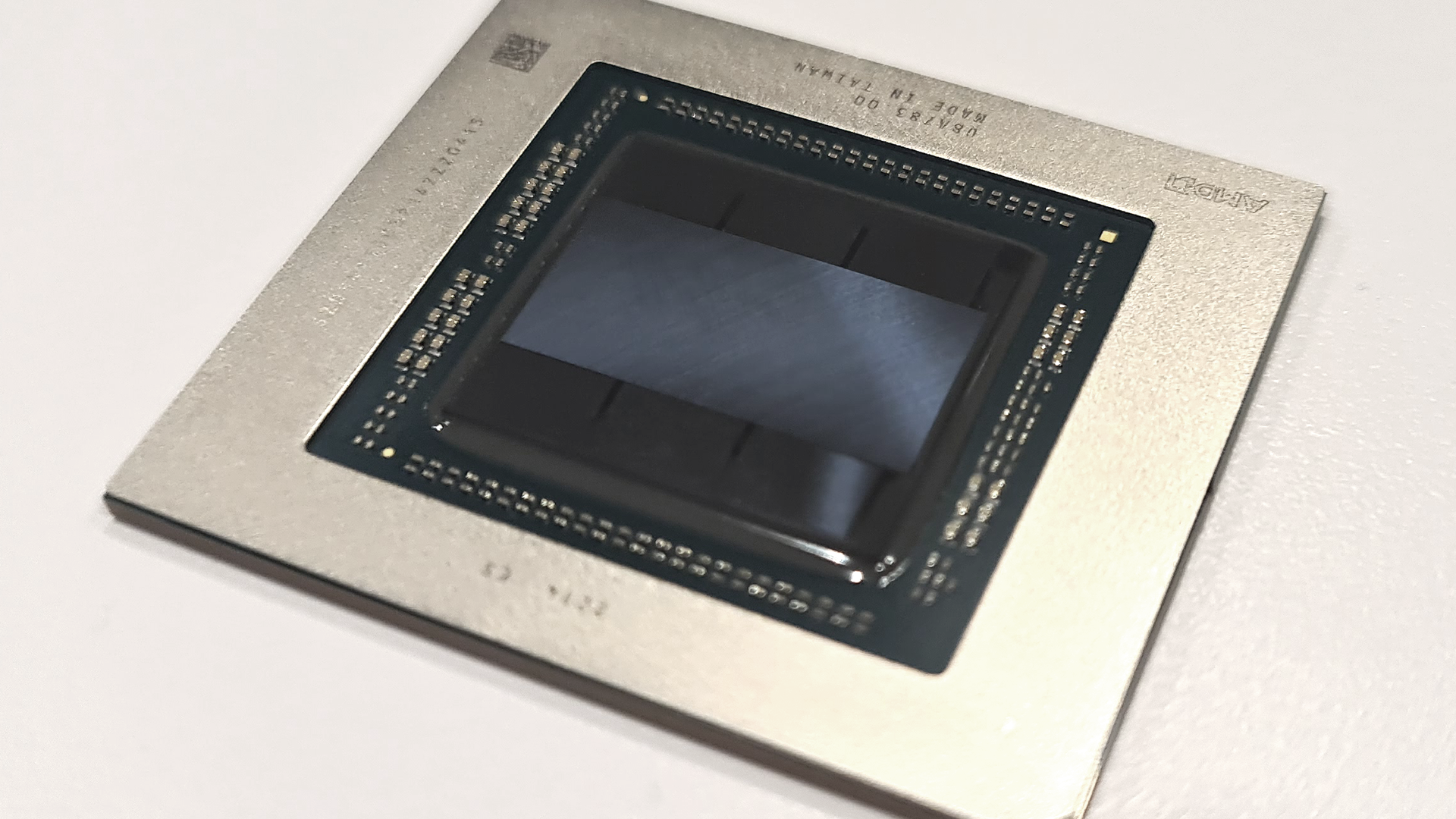
(opens in new tab)
That is the place AMD’s utilizing what’s referred to as an MCD. This takes all of the stuff normally caught surrounding the Graphics Engine—the Infinity Cache and the GDDR6 reminiscence interfaces—and boots them off to their very own chiplet. Every MCD is way, a lot smaller than the GCD, however therein lies one of many advantages of this chiplet system.
Whereas the Navi 21 GPU discovered within the RX 6950 XT is 520mm2, and the AD102 GPU in Nvidia’s RTX 4090 is a whopping 608mm2, AMD’s GCD for Navi 31 is simply 300mm2.
Every MCD is simply 37mm2.
A decrease chip dimension makes for larger yields. Greater yields ought to make for a significantly better provide image.
“The smaller the die, the higher the yield, and so it’s, simply from an financial standpoint, these are all very small, very, excellent yield,” Laura Smith, company vp, Graphics MNC and Product Administration, tells me.
“When you put all of them into one massive die, then you definately’ll see, and also you see it in all kinds of merchandise, you want some redundant capabilities, as a result of you are going to have fallout.”
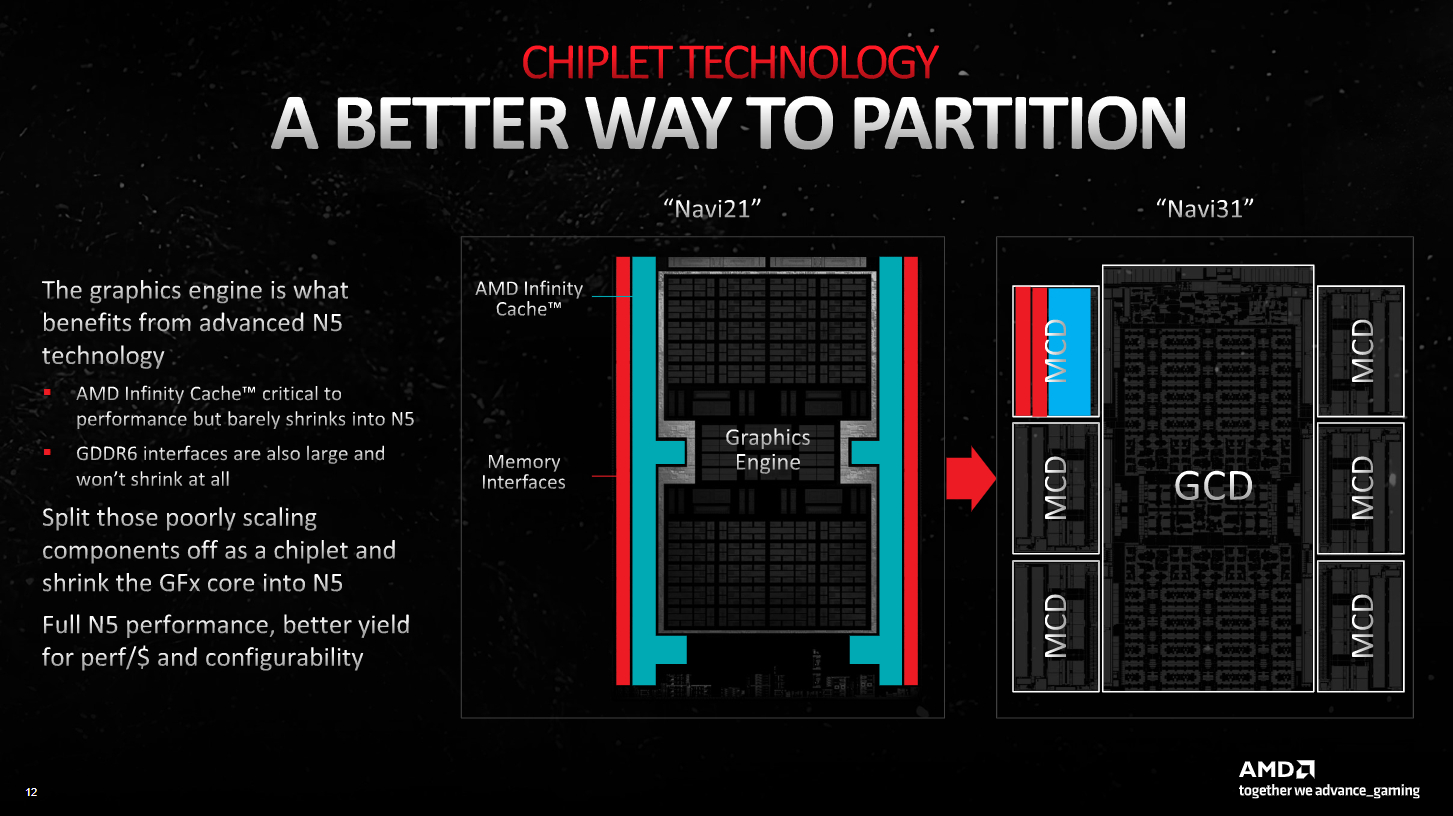
(opens in new tab)
I would like to assume this chiplet strategy would have a fascinating impact on the general provide image and thus trickle right down to influence the costs and provide us avid gamers will truly see over at retailers after the preliminary launch fervour. A single chiplet that dramatically reduces die dimension whereas additionally being utilised throughout a number of merchandise in AMD’s lineup may very well be an actual winner in that regard, even when AMD is not focusing on Nvidia’s prime GPU (opens in new tab) in efficiency. It actually labored for Ryzen, which employed an analogous strategy with its cIOD—a die that introduced collectively all of the uncore performance of the processor beneath one roof and on an older course of node.
The identical level may be made for AMD’s RDNA 3 chips with reference to course of nodes. The reminiscence interface and the Infinity Cache weren’t set to learn a complete lot from TSMC’s 5nm course of node, so splitting them off from the core and manufacturing them on the cheaper 6nm node made extra sense.
“Once we are chiplet design, we need to maximise it, which implies we need to put the issues that shrink properly and get the advantages from the superior and costly expertise nodes in that expertise and the issues that do not get a lot profit we are able to depart behind on previous expertise nodes,” Naffziger says.
“The fitting expertise, the suitable job.”
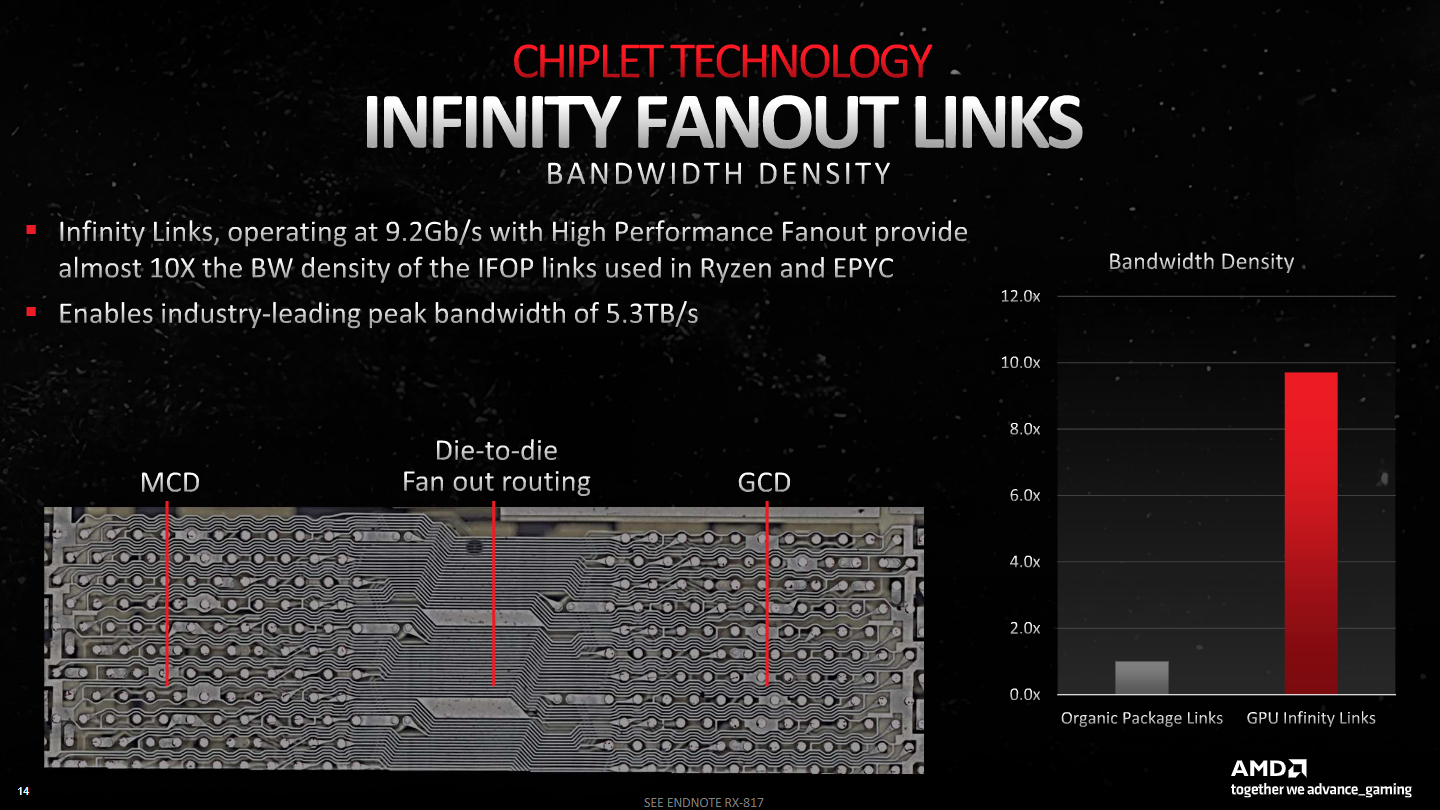
(opens in new tab)
Your subsequent machine
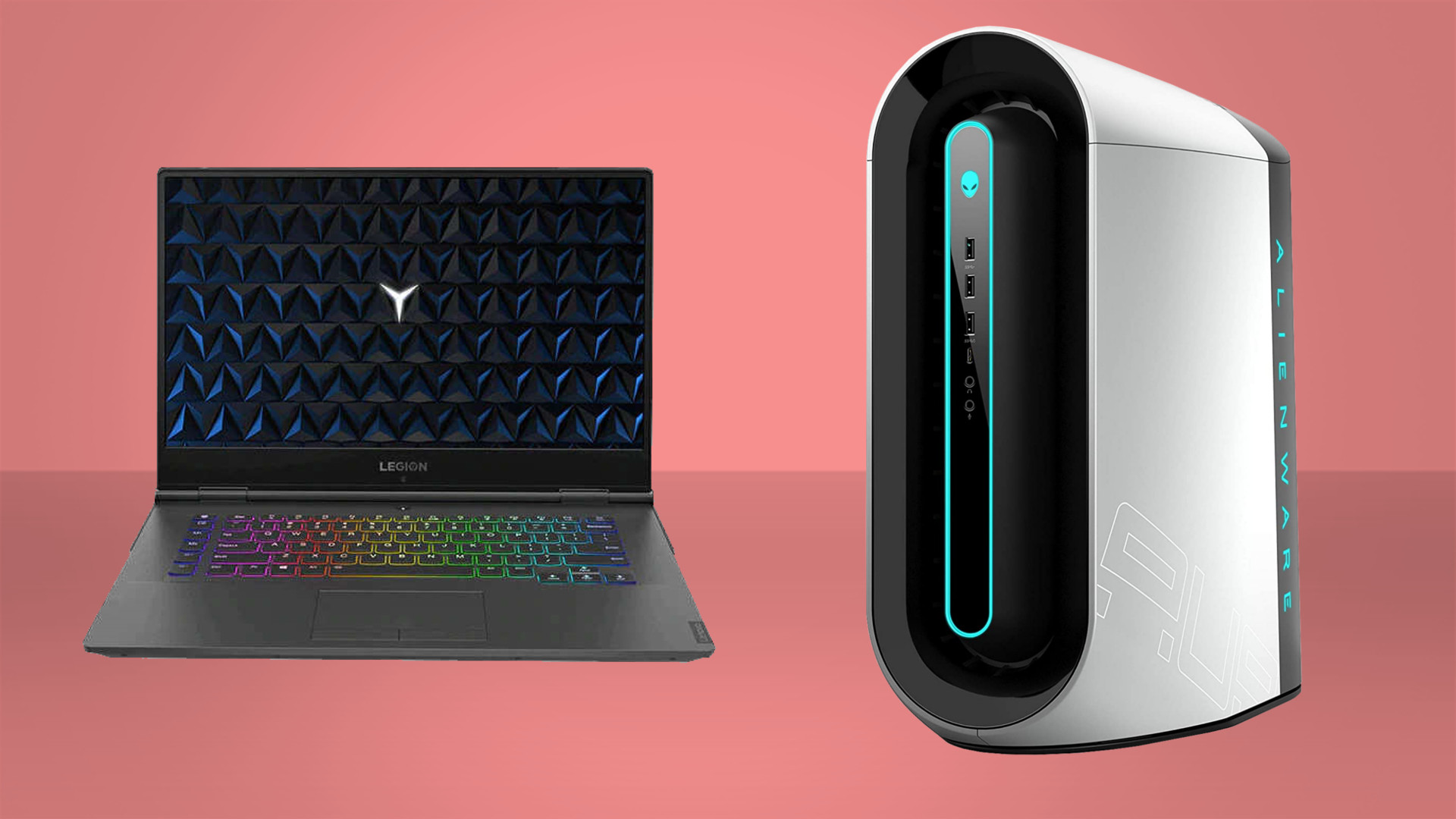
Finest gaming PC (opens in new tab): The highest pre-built machines from the professionals
Finest gaming laptop computer (opens in new tab): Excellent notebooks for cellular gaming
Naffziger labored on AMD’s Ryzen chiplet strategy—it was his “child” for years—so it solely is sensible that he’d be the one to assume up the brand new means this expertise may very well be utilized to a gaming GPU. That additionally necessitated a brand new interconnect—GPUs are suckers for bandwidth—and that is the place AMD’s thrilling Infinity Hyperlinks (opens in new tab) is available in.
However to assume this all began on a scrap of paper in a resort throughout a boring assembly. So take into consideration that subsequent time you are sitting in a gathering listening to somebody drone on about why your organization has to show off all of the heating within the workplace this winter—you might dream up your subsequent massive breakthrough proper there after which.
[ad_2]
Source link


